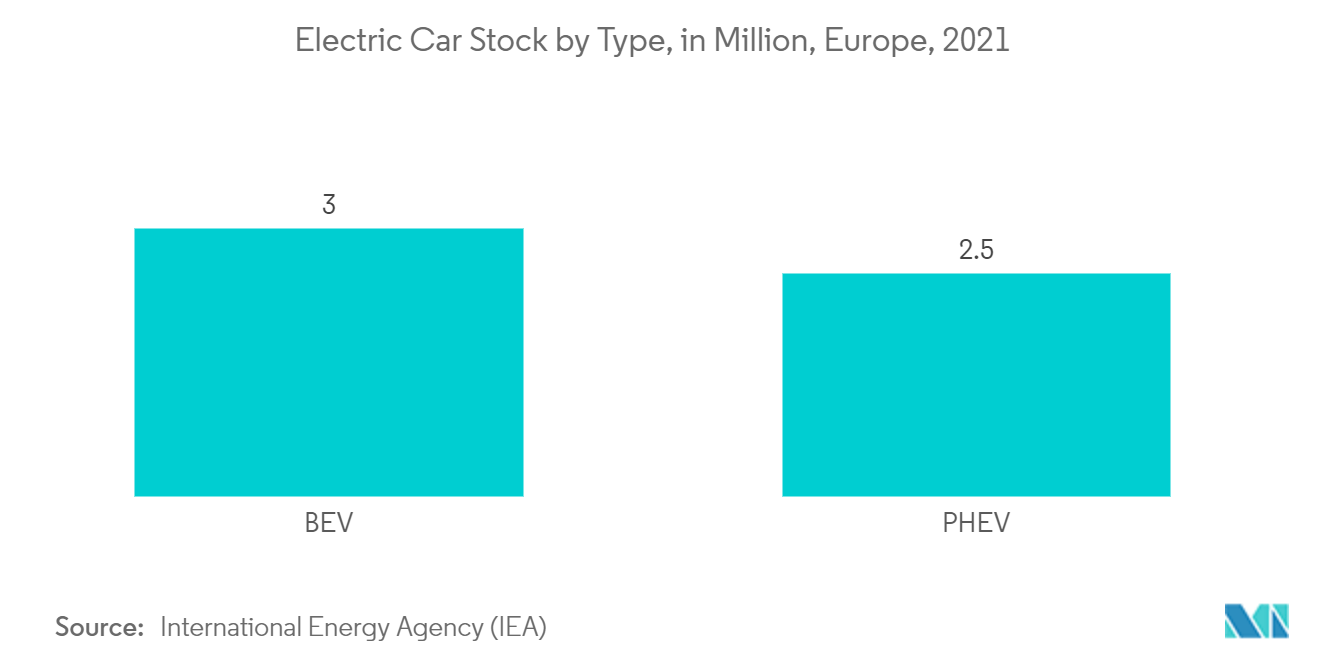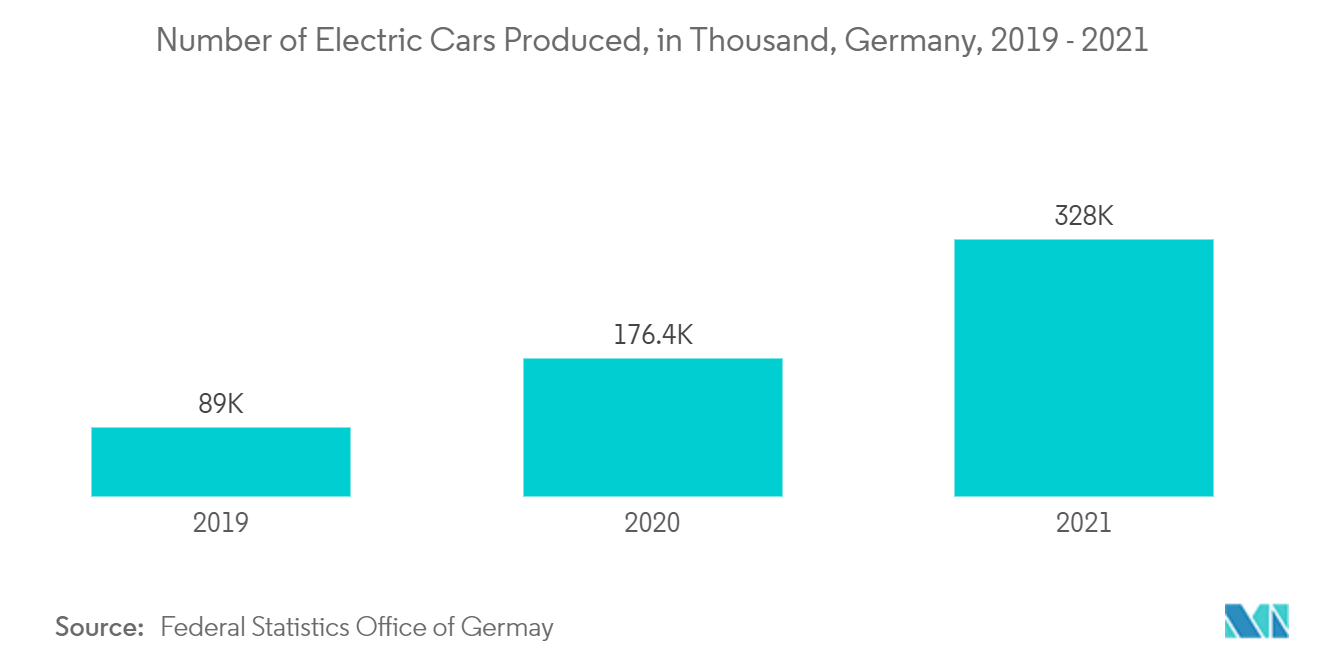Market Trends of Europe Electric Drives Industry
This section covers the major market trends shaping the Europe Electric Drives Market according to our research experts:
Increasing Demand for Electric Vehicles to Drive the Growth
- Europe has emerged among the leading regions wherein the adoption of electric vehicles has been increasing significantly. Higher awareness about environmental safety among the citizens and favorable government regulations are among the key factors driving the growth of electric cars in the region.
- For instance, the European Union's unique 750 billion euro stimulus package includes EUR 20 billion specifically to boost the sales of clean vehicles, and 1 million electric and hydrogen vehicle charging stations are to be installed by 2025.
- Most European countries are following a similar pattern and are framing supportive regulations to promote the use of electric vehicles. For instance, the United Kingdom's EV strategy includes ending the sale of new petrol and diesel vehicles by 2030. The government wants to ensure that all new cars and vans sold in the country are fully zero emission at the tailpipe by 2035.
- The impact of such initiatives is already visible, as the sales of electric and hybrid vehicles have been increasing across most countries. For instance, according to the European Automobile Manufacturers' Association (ACEA), while the overall new-car market in Europe was down 1.9 percent year on year, sales of electric vehicles increased by 63.4 percent - from 745,644 in 2020 to 1,218,360 last year.
- The growing need for energy protection is a major factor driving the growth of speed control devices. AC drives provide the best strategy for controlling the speed of electrical motors to fit load demand. This, in turn, is expected to drive market growth during the forecast period.

Germany to Hold Significant Market Share
- Germany is among the largest European country in terms of industrial infrastructure. Automotive, Electric, Chemical & Mechanical engineering is among the leading industrial industries of Germany. According to the World Bank, the value added by the manufacturing sector to Germany's GDP was about 18% in 2021.
- As the implementation of electric motors in industrial fields no longer concerns only automobiles. The industrial world is gradually getting in touch with these machines across multiple industries, including packaging, food processing, manufacturing, etc., and all those fields where there is the need to move through a motion inside the machine itself are further driving the demand for electric drives primarily for motion control purposes.
- Germany is among the largest automotive manufacturers in the world. Some of the world's leading automotive brands, such as Audi, BMW, Mercedes-Benz, and Volkswagen, have their footprint in the country. The increasing production of automobiles in the country is among the leading factor driving the demand for electric drives in the country.
- Furthermore, the increasing demand for electric vehicles across the European region is further driving investments in the country's automotive sector, which is expected to support the need for electric drives further. For instance, in February 2021, Ford announced its plans to invest about USD1 billion in an electric vehicle production facility in Cologne, Germany. The investment aligns with the company's strategy of transforming its entire passage vehicle offerings into electric.


